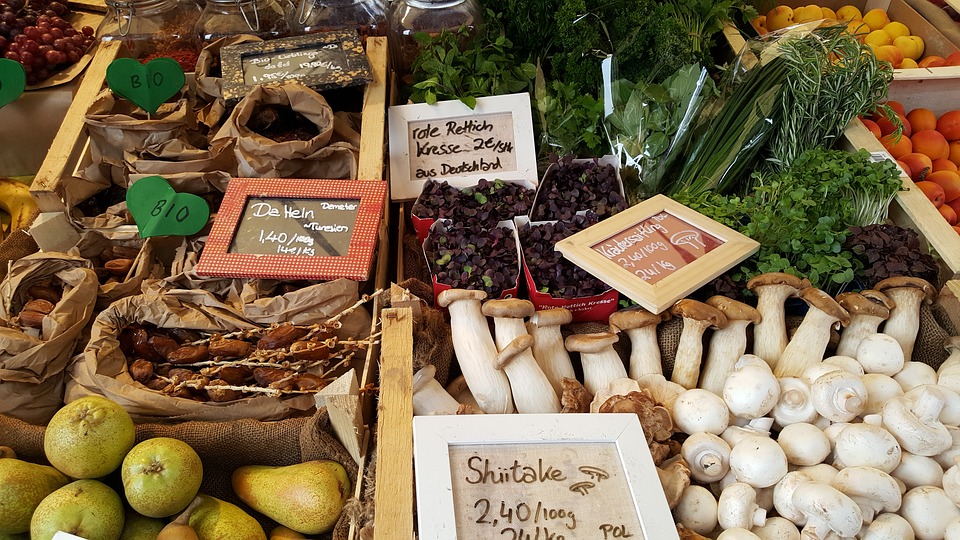According to the Vegetarian Resource Group, “plant-based proteins are remarkably efficient at synthesizing amino acids and promoting cell growth and repair.” But while it’s easy to get sufficient protein into the diet from protein-rich plant sources like soy, quinoa, hemp seeds (or many other seeds), chia, nuts, chickpeas, jackfruit, oatmeal and brown rice, what can we say about purely vegetable sources? For those who wish to incorporate more of these items into their meals, we’ve searched around and found some of the top vegetable protein sources. For concerned vegetarians or worried new vegans, take heart and gaze on — it’s not hard to get the protein you need from a variety of plant-based sources, even purely from vegetables, if you like.
Packing nearly 8 grams of protein per cup, these are an ideal source of the plant-based nutrient. Check for peas as a substitute for many vegan products, too, including mayonnaise, for an alternative to soy, or try them in various other tasty forms.
Spirulina
Holding its own in the protein department, coming it at 4 grams of protein per tablespoon (that’s tablespoon, not cup), spirulina is a hearty contender for the top protein title. A staple for smoothies, spirulina can also be added to cakes, puddings, salads, yogurts, pastas, cookies and frozen desserts.
Lentils
These tiny lens-shaped legumes hand over approximately 9 grams of protein per half-cup serving. There are several types of lentils, each slightly different in color and flavor, as well as protein consistency — but they average in at around the aforementioned amount. In addition to being low-calorie, high-fiber and nutrient-dense overall, we’ve also heard they can lower cholesterol and maybe even reduce your risk of heart disease. Try some red lentil recipes like soups, dips, hummus, chili and even granola today.
Sun-Dried Tomatoes
Surprised? At 7.6 grams of protein per one cup serving, you’ll want these in your favorite dishes from now on!
Black Beans & Lima Beans
Served in countless dishes from soups to succotash and veggie burgers to brownies, black beans and lima beans are versatile and brimming with protein — both offering between 7 and 8 grams per half-cup serving.
Spinach
Another versatile favorite, spinach offers 5.3 grams of protein per cup, and can be found in everything (often paired with mushrooms — offering 3.9 grams per cup themselves) from salads to omelettes and quiches to pizza and even green smoothies.
Squash
Various forms of squash are available year-round, most of which can be guaranteed to offer around 5 grams of protein per one cup serving. Give some of these summer squash soups or baked spaghetti squash recipes a try this week!
Potatoes
Yep, you heard it right — potatoes! Although they may have gained a reputation as being less than stellar on nutritional value, potatoes offer around 4 grams of protein per medium white potato. Summertime says they need to be made into salad…but you don’t have to stop there! Try them baked, mashed, stuffed, roasted, fried, made into chips or blended into soup today — you can even microwave them at between 5 to 8 minutes each, if you poke a few holes in them first!
Corn
Sweet yellow corn is a summertime favorite, especially for backyard cookouts, and brings with it 4.7 grams of protein per cup. Don’t skimp! It’s high in manganese and other nutrients as well.
Cauliflower, Snap Peas & Asparagus
These each pull in around 2 – 3 grams of protein per cup, and can be found in countless forms of cuisine either raw, roasted, blended into soups or tossed into pasta salads.
BroccoliAt two grams of protein per half-cup cooked serving, broccoli ranks high among the veggie protein powers. Toss some in your salads, soups, casseroles, lasagna, hummus, quiche or all sorts of other recipes today!
Brussel Sprouts These little guys also pop with protein at around 2 grams per half-cup serving. Not only that, they also come with uber high levels of potassium and Vitamin K. Not sure how to prepare them? Try them sauteed with your favorite spices, breaded and fried or baked, made into fritters or chopped and roasted alongside cubed sweet potatoes.
AvocadoCreamy and delicious in dishes from the traditional guacamole or avocado toast to grilled, stuffed avocado halves and even desserts like pudding or frozen dessert pops, this veggie (technically a fruit, but don’t tell anyone) pulls in around two grams of protein per half of an avocado.
Shiitake Mushrooms (Dried)These can give you the day’s protein needs easily. With 1.4 grams of protein per four mushroom serving, and also rich in B-complex vitamins and minerals, you can work them into anything from salads to ravioli.

